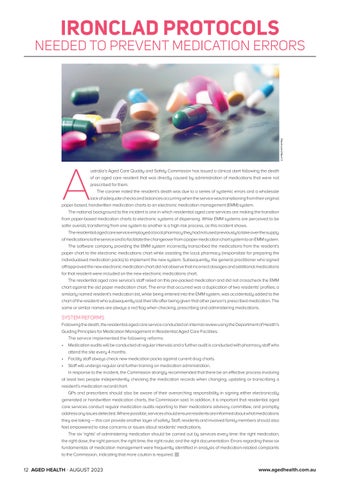CULTURALLY INCLUSIVE CARE REFORMS – WHERE ARE WE AT AND WHAT’S NEXT?
TACKLING AGEISM IN AGED CARE

AUGUST 2023 ISSUE 5 This magazine is FREE for industry professionals www.agedhealth.com.au/subscribe
PP 100029283 REIMAGINING AGED CARE ROLES

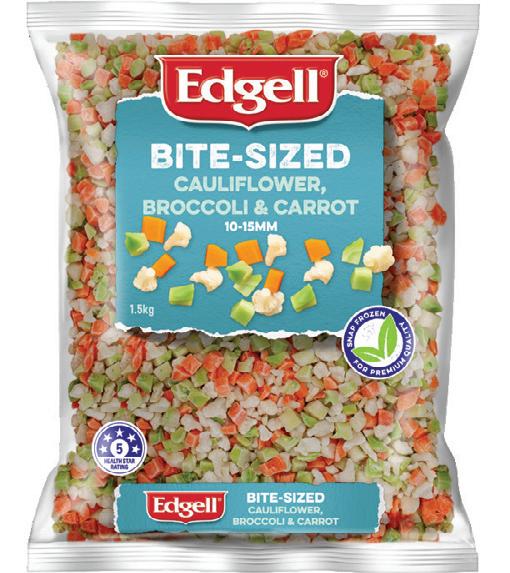

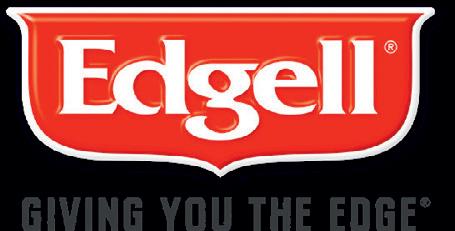
 Simplot code: 12926
Simplot code: 12926
TO
AND
MORE!
Simplot code: 12927 SCAN
WATCH
LEARN
FROM THE EDITOR
The aged care sector is continuing to face severe staffing challenges — with a Committee for Economic Development of Australia (CEDA) report predicting a shortfall of at least 110,000 workers in the next decade — and the ongoing and upcoming reforms are placing increasing pressure on providers. A recent survey by consultant Mirus Australia found more than half of aged care providers (52%) had serious concerns about the toll of too much change.
While reform is essential to ensure we meet the diverse needs of older Australians, it also puts a major strain on an already struggling sector. These difficult times have served as a catalyst for innovation in the sector. In this issue’s lead article, Michelle Church, Chief Executive, St Basil’s South Australia, details how her organisation, in partnership with Griffith University, is using an innovative and collaborative approach to develop a new staff ‘matrix’ with an aim to create a more engaged and sustainable aged care workforce.
In a detailed and information-packed article on page 25, law firm Maddocks’ partners Angela Wood and Lucille Scomazzon reflect on the new regulatory model for Commonwealth-funded aged care services and the new Aged Care Act and what it means for providers.

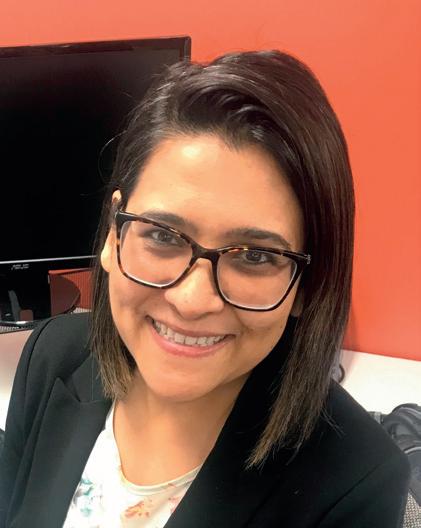
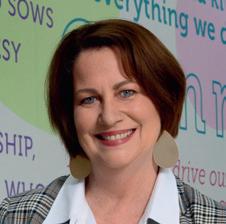
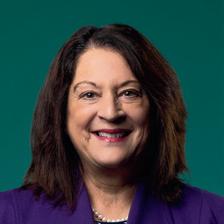
July saw Age Discrimination Commissioner Dr Kay Patterson AO retire after a long and distinguished public service career spanning around four decades. Before she officially retired from her role on 28 July 2023, she shared valuable insights on changing perspectives on age beliefs — go to page 10 to read her article.

Preventing medication errors, oral health challenges in aged care, inclusive aged care design, remote monitoring data and compliance are some of the other topics covered in this issue.
Until next time!
CONTRIBUTORS
Mansi Gandhi Editor ah@wfmedia.com.au
AUGUST 2023 - AGED HEALTH 3 www.agedhealth.com.au
Angela Wood and Lucille Scomazzon Partners, Maddocks
Michelle Church Chief Executive, St Basil’s SA
Dr Kay Patterson AO Outgoing Age Discrimination Commissioner, Australian Human Rights Commission

4 AGED HEALTH - AUGUST 2023 www.agedhealth.com.au CONTENTS 6 Reimagining aged care roles 10 Changing perspectives on age beliefs 12 Ironclad protocols needed to prevent medication errors 14 Device to remotely monitor breathing 18 Oral health challenges in aged care 22 How do 'superagers' defy brain aging? 25 More than an Act 30 Facility design and the loneliness problem 34 Laughter therapy to boost mood, morale Regulars 16 Design Matters — Designing for inclusion 32 A Day in the Life of... Linda Van Zyl SUBSCRIBE FOR FREE NEWSLETTERS MAGAZINE agedhealth.com.au/subscribe cover image: iStock.com/SvetaZi iStock.com/KatarzynaBialasiewicz




The Leukoplast® skin sensitive familyReliable grip, gentle removal. ESS0486v2 07/2023
REIMAGINING AGED CARE ROLES

6 AGED HEALTH - AUGUST 2023 www.agedhealth.com.au
iStock.com/FatCamera
— A NEW COLLABORATIVE APPROACH
MICHELLE CHURCH*, CHIEF EXECUTIVE, ST BASIL’S SA
St Basil’s SA, in partnership with Griffith University, is developing a new ‘staff matrix’ that aims to create a more engaged and sustainable aged care workforce.
With the population continuing to age, the demand for aged care services is only set to increase. As we know, the aged care workforce is already at a crisis point, with increasing job demands and high staff turnovers impacting our ability to meet the standards of aged care expected by the community.
It is essential that aged care workers are equipped with the skills and support they need to provide high-quality care into the future. To do this we need to think and work differently, so that’s where this new project comes in.
HOW IT STARTED
Before COVID changed our lives, we had already commenced our journey of reimagining aged care. We had consulted with staff, residents and families with an intention to ‘think outside of the square’ to develop a new model of care with a holistic focus, so our residents could live a life that was more meaningful to them.
What we already knew

• Care was siloed between clinical, carer, lifestyle and hospitality teams.
• Aged care traditionally has a particularly flat management structure.
• Care was still predominantly based on a medical model.
• Living in a smaller homelike environment promotes improved resident experience and outcomes.
What we learned during COVID
• Good teamwork is critical when working under pressure.
• Effective leadership means leading teams and empowering team members, rather than micromanaging staff with a task focus.
• Staff need to be valued and feel safe in the workplace.
• Staff and residents need leaders who really care about them.
AUGUST 2023 - AGED HEALTH 7 www.agedhealth.com.au
>>
COVID also gave us the opportunity to really reflect on our model of care. We used the 2018 report ‘A Matter of Care: Australia’s Aged Care Workforce Strategy’ to guide us and determined that leadership and teamwork were the foundations for successful organisations. This meant we needed to rethink our organisational structure to support a new sustainable leadership model.
The goal was to move to a more homelike model of care for our residents. To achieve this, we started on the journey of challenging what had always been done and by whom. We aimed at reducing reliance on clinical professionals taking responsibility for everything that happened across any given day and acknowledging that there were many tasks that could be managed effectively by non-clinical leaders. We also wanted to provide better support to our carers, by allocating them a dedicated leader to guide and support them, and ensure they felt part of the team.
WHAT INSPIRED THE DEVELOPMENT OF NEW STAFF MATRIX
Job roles in aged care have remained fairly consistent without any major disruption or change; however, the Royal Commission into Aged Care and documents such as the 2018 workforce strategy report, suggest that we need to change.

Because we were doing something different by implementing new leadership roles, we needed to dispel longstanding perceptions of role responsibility in aged care. This meant developing an evidence-based ‘role matrix’ underpinned by good clinical governance, and safe quality care principles. This could then be used to give permission to change traditional job roles and support recruitment into the sector.
PROJECT ROLLOUT AND OUTCOMES
The project is already underway, with staff from Griffith University visiting our sites in June and July to chat with and observe our team working, and conduct initial surveys with staff, residents and families.
This will be followed by a series of workshops with staff, residents, and families to co-design
the staff matrix. Once finalised, a four-month trial will be implemented and evaluated, before the matrix is rolled out via an IT platform across our organisation.
We are hoping that implementation of the matrix will:
• Improve role clarity for staff and better career progression opportunities.
• Reduce workplace stress and staff intention to leave their job.
• Improve the quality of care provided to our residents.
• Improve staff, residents and residents’ families’ general satisfaction with care.
The collaboration will enable us to progress our vision of creating an engaged workforce that challenges the status quo and improves the quality of service to the residents in our care. n
*Michelle Church is a passionate leader who is committed to creating a sustainable shift in the way that we care for and respect our elders. She recognises the vital role that relationships play in supporting our elders to live well and has been instrumental in creating a leadership culture that is underpinned by the simple but powerful values of courtesy and kindness. Church’s connected leadership style is underpinned by a strong operational and finance background across a broad range of sectors that include agriculture, small business, education and of course aged care.

8 AGED HEALTH - AUGUST 2023 www.agedhealth.com.au
iStock.com/monkeybusinessimages
THE COLLABORATION WILL ENABLE US TO PROGRESS OUR VISION OF CREATING AN ENGAGED WORKFORCE THAT CHALLENGES THE STATUS QUO AND IMPROVES THE QUALITY OF SERVICE TO THE RESIDENTS IN OUR CARE.
Breathe easy
Caire provides everything you need for your oxygen therapy, from oxygen concentrators to accessories, we are dedicated to helping you breathe easy.
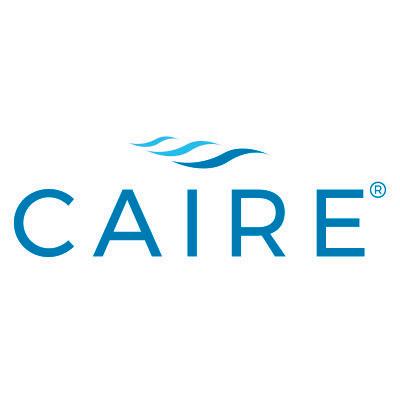

Freestyle Comfort
Expand your comfort zone with this innovative and powerful design:
• Compact and Lightweight
• Lasts all day
Ergonomically Designed Quiet
Combining portability with clinical efficiencygiving you the freedom to travel and enjoy life on the go:
• Compact and transportable
• Extended Battery Life
• Quiet 24/7 Use
NewLife Intensity 10
Stationary oxygen concentrator that’s durable with a high continuous flow:
• Higher flow options for patients in hospitals or long-term care facilities
• Dual flow option allowing two patients to use simultaneously Easy to service and maintain
A power efficient stationary oxygen concentrator is the must have for your home oxygen delivery needs:
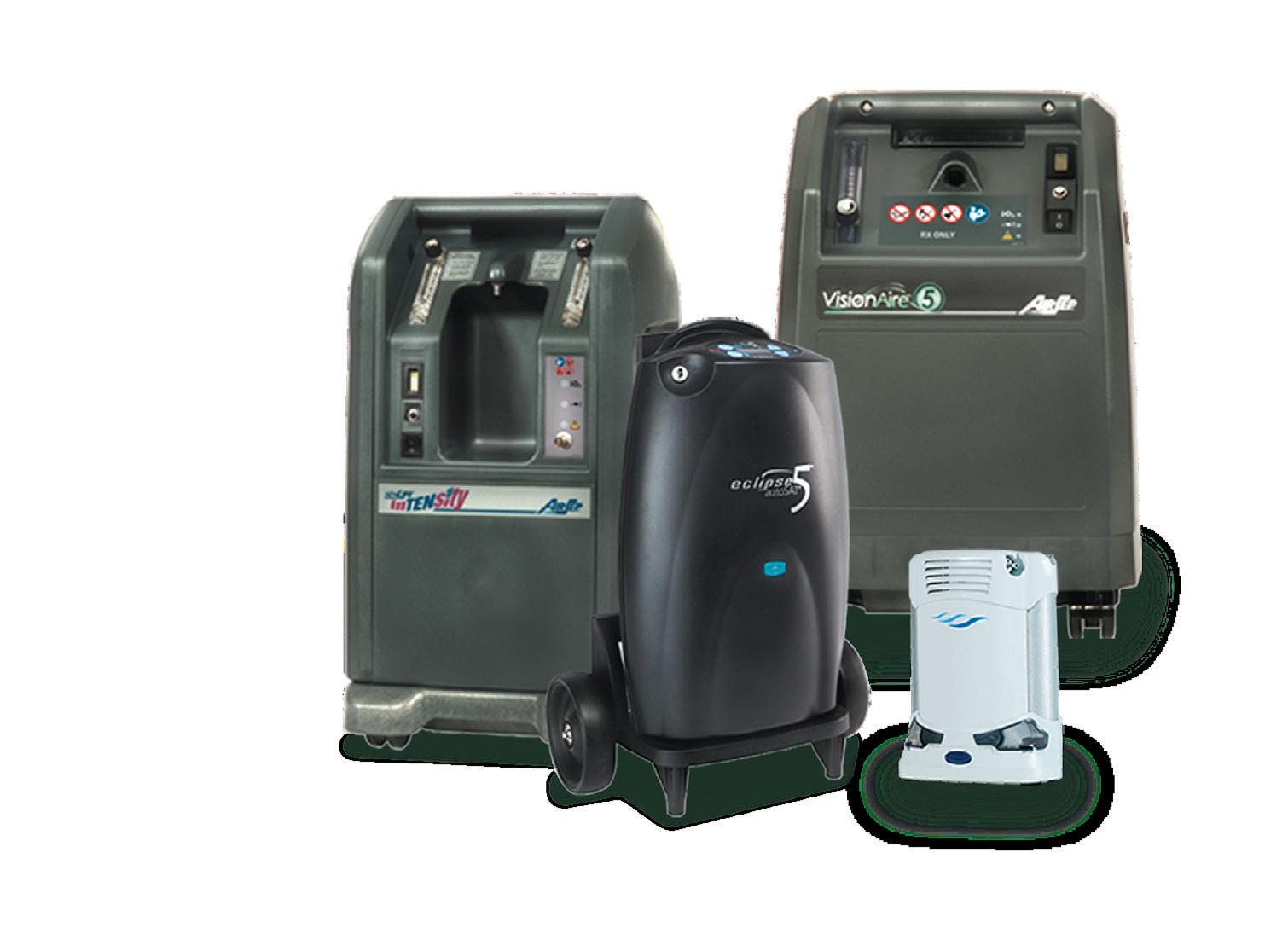
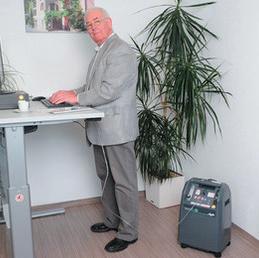
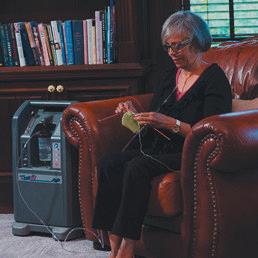
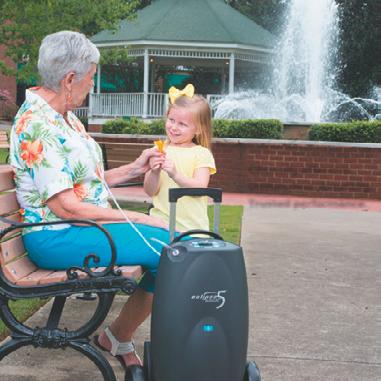
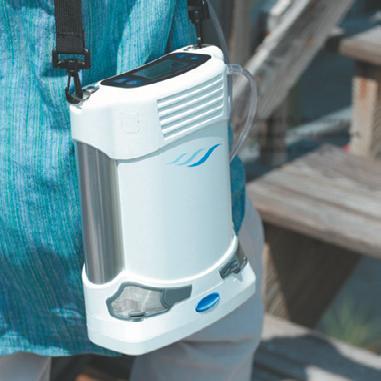
• Lightweight and easily transportable
• Low failure rate with no preventative maintenance schedule
Lockable flow meter caireaustralia.com.au
Eclipse 5
AirSep VisionAire 5
CHANGING PERSPECTIVES ON AGE BELIEFS
Ageism is one of the most prevalent and tolerated forms of prejudice, making it a significant problem in Australian society.
Ageism — particularly against older adults — is so deeply ingrained in our societal norms and values that it can be difficult to recognise within ourselves and our surroundings.
Even so-called ‘benevolent’ or wellintentioned ageism can be harmful, such as making decisions on behalf of older people, or the belief that older adults should always be offered help regardless of their actual needs or preference.
These attitudes are often driven by sympathy and compassion but the assumption that older adults are vulnerable and in need of constant assistance can be limiting and disempowering and lead to older individuals internalising and coming to believe the stereotype others hold about them.
What if there was a simple intervention that could help break down these attitudes?
In fact, our new report shows that ageism might be one of the easiest prejudices to shift. We surveyed aged care and community workers about their attitudes to age and ageing before and after doing an educational workshop, and the results were very encouraging.
When we first surveyed the workers, we found they were already somewhat less ageist than the general population. So, we were particularly pleased that levels of ageism dropped significantly further after a single 2.5-hour workshop which looked at age beliefs, busted some myths about older people and allowed participants to share
experiences and brainstorm changes they could easily implement in their own workplace.
The results were unaffected by whether participants attended a faceto-face or an online workshop, which is good news for flexible delivery options.
Post-workshop focus group discussions further indicated that participants had taken various actions because of the workshop, eg, changing the way they interact with older adults, adopting new work practices or approaches, sharing the learnings with others, and calling out ageism in their workplace and community. This led to a ripple effect where participants talked to colleagues, clients and friends, so benefits continue to spread after the session.
And our follow-up testing three months later found that the changes had persisted. Responses about changes in behaviour revealed that the workshop served as a catalyst for positive changes in the vast majority of respondents’ thoughts and behaviour. For example:
• 90% reported rethinking the way they communicate with older adults
• 87% had discussed ageism with others
• 86% actively considered actions they could initiate to address ageist attitudes in their workplace
• 82% reconsidered their attitudes towards ageing.
One thing to note — we were only considering benevolent (not hostile) ageism. Intentional, hostile ageism is differently motivated and requires more complex and tailored interventions.
We’re not saying that a single intervention is enough to make even well-intentioned ageist beliefs magically disappear. Ageism is rife throughout society and underpins many common behaviours. But we are encouraged that a single intervention can do so much to start and sustain the process, with demonstrated benefits for workers and their older clients. n
What is ageism?
How we think, feel and act towards others (and ourselves) based on age. World Health Organization, 2021
Those interested can read the report here: https://humanrights.gov. au/changingperspectives. To find out more about the workshop and how it might work for your team, please email the AHRC research director, Joanna Maxwell, on Joanna.maxwell@humanrights.gov.au.
10 AGED HEALTH - AUGUST 2023 www.agedhealth.com.au
DR KAY PATTERSON AO, OUTGOING AGE DISCRIMINATION COMMISSIONER, AUSTRALIAN HUMAN RIGHTS COMMISSION
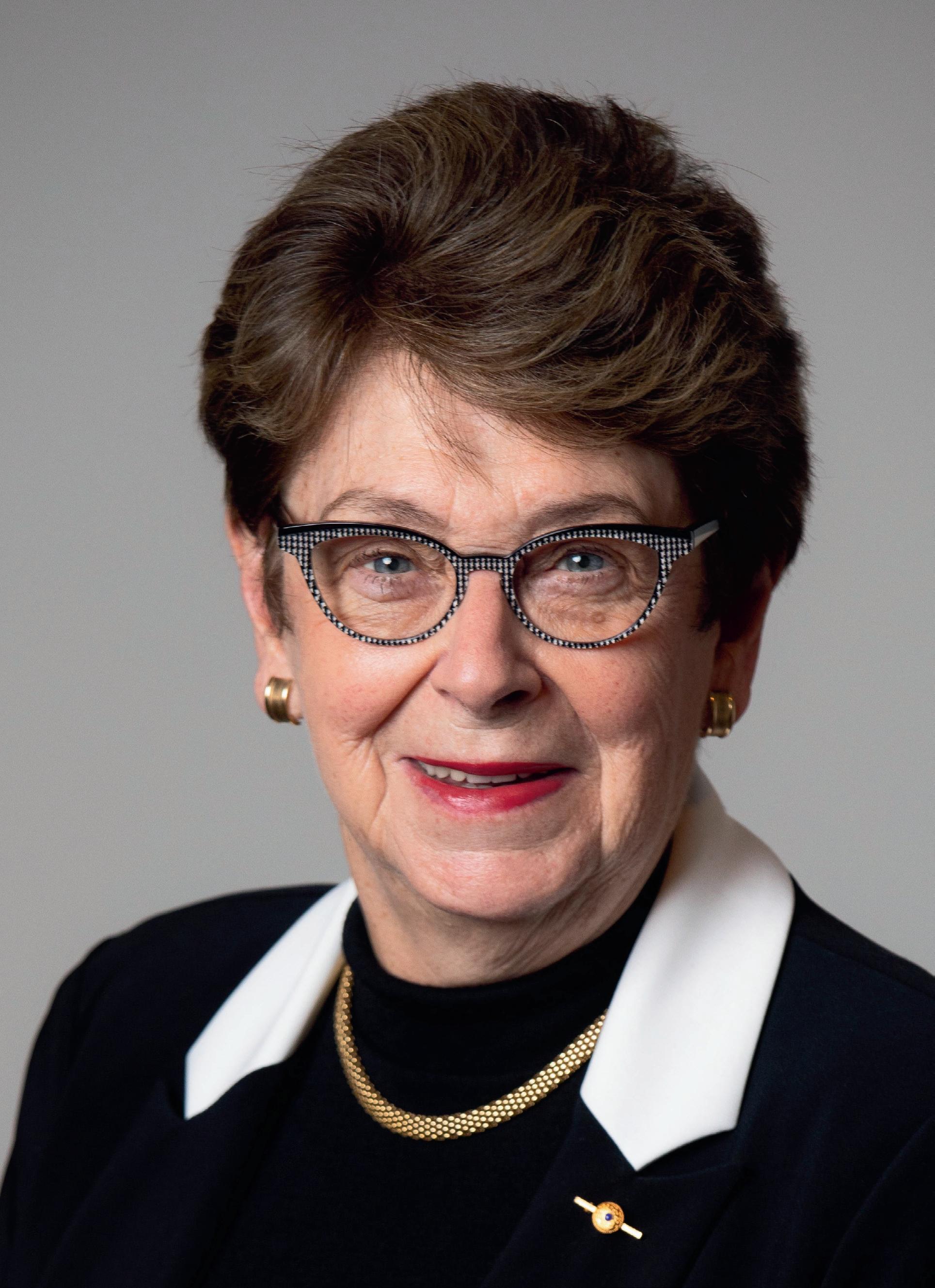
AUGUST 2023 - AGED HEALTH 11 www.agedhealth.com.au
IRONCLAD PROTOCOLS NEEDED TO PREVENT MEDICATION ERRORS
Australia’s Aged Care Quality and Safety Commission has issued a clinical alert following the death of an aged care resident that was directly caused by administration of medications that were not prescribed for them.

The coroner noted the resident’s death was due to a series of systemic errors and a wholesale lack of adequate checks and balances occurring when the service was transitioning from their original paper-based, handwritten medication charts to an electronic medication management (EMM) system.
The national background to the incident is one in which residential aged care services are making the transition from paper-based medication charts to electronic systems of dispensing. While EMM systems are perceived to be safer overall, transferring from one system to another is a high-risk process, as this incident shows.
The residential aged care service employed a local pharmacy they had not used previously to take over the supply of medications to the service and to facilitate the changeover from a paper medication chart system to an EMM system.
The software company providing the EMM system incorrectly transcribed the medications from the resident’s paper chart to the electronic medications chart while assisting the local pharmacy (responsible for preparing the individualised medication packs) to implement the new system. Subsequently, the general practitioner who signed off/approved the new electronic medication chart did not observe that incorrect dosages and additional medications for that resident were included on the new electronic medications chart.
The residential aged care service’s staff relied on this pre-packed medication and did not crosscheck the EMM chart against the old paper medication chart. The error that occurred was a duplication of two residents’ profiles; a similarly named resident’s medication list, while being entered into the EMM system, was accidentally added to the chart of the resident who subsequently lost their life after being given that other person’s prescribed medication. The same or similar names are always a red flag when checking, prescribing and administering medications.
SYSTEM REFORMS
Following the death, the residential aged care service conducted an internal review using the Department of Health’s Guiding Principles for Medication Management in Residential Aged Care Facilities.
The service implemented the following reforms:
• Medication audits will be conducted at regular intervals and a further audit is conducted with pharmacy staff who attend the site every 4 months.
• Facility staff always check new medication packs against current drug charts.
• Staff will undergo regular and further training on medication administration.
In response to the incident, the Commission strongly recommended that there be an effective process involving at least two people independently checking the medication records when changing, updating or transcribing a resident’s medication record/chart.
GPs and prescribers should also be aware of their overarching responsibility in signing either electronically generated or handwritten medication charts, the Commission said. In addition, it is important that residential aged care services conduct regular medication audits reporting to their medications advisory committee, and promptly address any issues detected. Where possible, services should ensure residents are informed about what medications they are taking — this can provide another layer of safety. Staff, residents and involved family members should also feel empowered to raise concerns or issues about residents’ medications.
The six ‘rights’ of administering medication should be carried out by services every time: the right medication; the right dose; the right person; the right time; the right route; and the right documentation. Errors regarding these six fundamentals of medication management were frequently identified in analysis of medication-related complaints to the Commission, indicating that more caution is required. n
12 AGED HEALTH - AUGUST 2023 www.agedhealth.com.au
iStock.com/tibor13

DEVICE TO REMOTELY MONITOR BREATHING
Anew system could be developed for use in aged-care facilities for people with sleep apnoea or breathing concerns.
Scientists at The University of Sydney and the NSW Smart Sensing Network have devised a new photonic radar system that delivers contactless, high-definition detection of vital signs. The system could be developed for use in a variety of clinical situations, such as intensive care units, for patients with critical health conditions, health monitoring in aged-care facilities and prisons, or in safety monitoring situations where drowsiness can cause accidents.
This type of monitoring is currently mostly achieved via wired or invasive contact systems, which can be inconvenient or unsuitable, eg, for patients with burns or for infants with insufficient skin area.
The scientists from The University of Sydney Nano Institute (Sydney Nano) and the NSW Smart Sensing Network wanted to address these issues by developing a photonic radar system that allows for highly precise, non-invasive monitoring. Their research has been published in Nature Photonics.
The newly developed and patented radar system was used to monitor cane toads and was able to accurately detect pauses in the toads’ breathing patterns remotely. The system was also used on devices that simulate human breathing.

The scientists said this demonstrated a proof of principle for using photonic radar that could enable the vital-sign monitoring of multiple patients from a single, centralised station.
An advantage of this approach is the ability to detect vital signs from a distance, eliminating the need for physical contact with patients. This not only enhances patient comfort but also reduces the risk of crosscontamination, making it valuable in settings where infection control is crucial.
“Photonic radar uses a light-based, photonics system — rather than traditional electronics — to generate, collect and process the radar signals. This approach allows for very-wideband generation of radio frequency (RF) signals, offering highly precise and simultaneous, multiple tracking of subjects,” said lead author Ziqian Zhang, a PhD student in Sydney’s School of Physics.
“Our system combined this approach with LiDAR — light detection and ranging. This hybrid approach delivered a vital sign detection system with a resolution down to 6 mm with micrometre-level accuracy. This is suitable for clinical environments.”
Alternate approaches to non-contact monitoring have typically relied on optical sensors, using infrared and visible wavelength cameras.
“Camera-based systems have two problems. One is high sensitivity to variations in lighting conditions and skin colour. The other is with patient privacy, with high-resolution images of patients being recorded and stored in cloud computing infrastructure,” said University of Sydney Pro-Vice-Chancellor (Research) and research lead Professor Ben Eggleton, who is also the Co-Director of the NSW Smart Sensing Network.
RF detection technology can remotely monitor vital signs without the need for visual recording, providing built-in privacy protection. Signal analysis, including identification of health signatures, can be performed with no requirement for cloud storage of information.
Working with collaborators and partners in the NSW Smart Sensing Network, the researchers hope this research provides a platform to develop a cost-effective, high-resolution and rapid-response vital-sign monitoring system with application in hospitals and corrective services.
“A next step is to miniaturise the system and integrate it into photonic chips that could be used in handheld devices,” Zhang said. n
14 AGED HEALTH - AUGUST 2023 www.agedhealth.com.au
iStock.com/jfmdesign
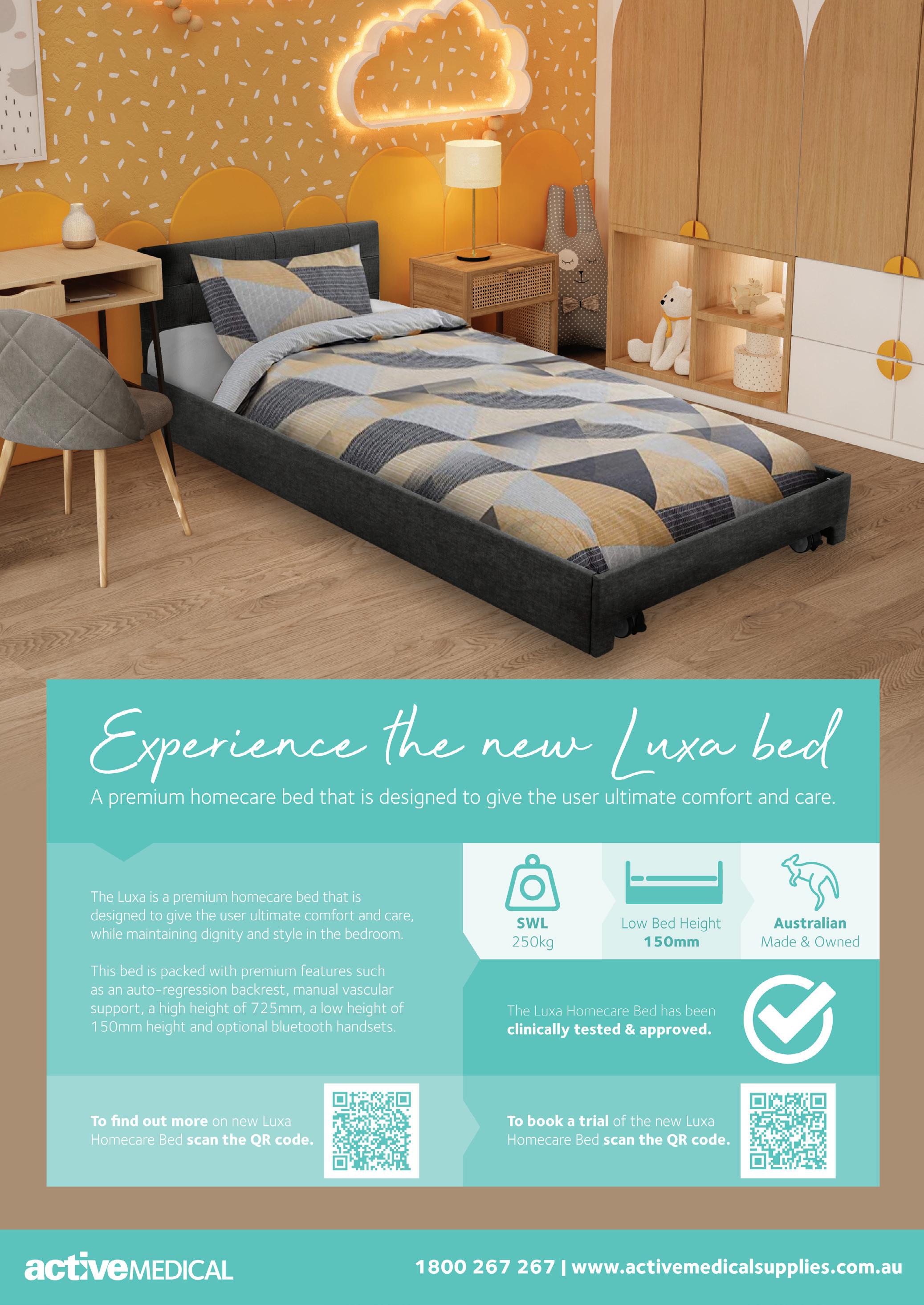
DESIGN
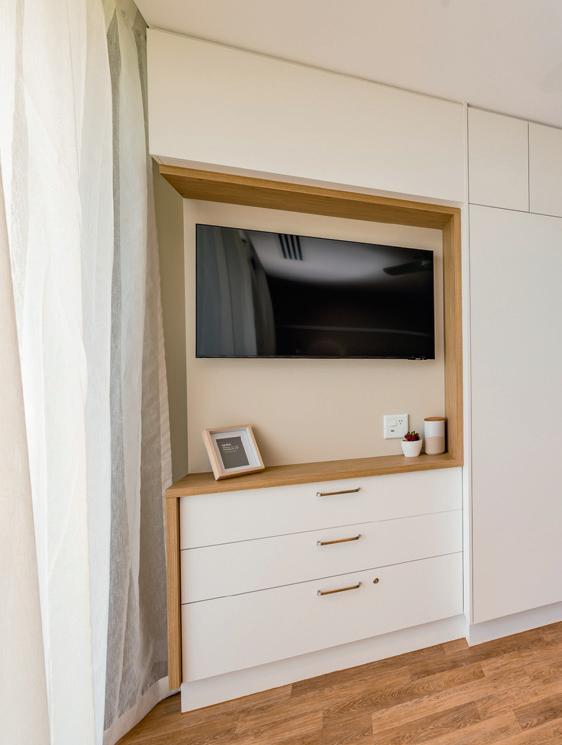
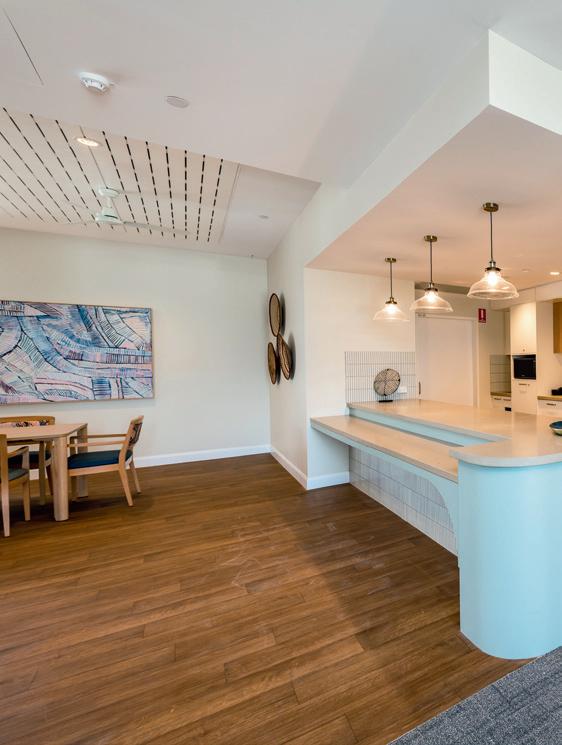
DESIGNING FOR

INCLUSION
16 AGED HEALTH - AUGUST 2023 www.agedhealth.com.au
MATTERS
The Berlasco Inclusive Residential Care project, designed by Paynters for the Ethnic Communities Council of Queensland (ECCQ), showcases the power of thoughtful design and community integration.

Situated in the heart of Indooroopilly in Brisbane’s southwest, the facility offers 107 single rooms with ensuites and eight suites with kitchenettes.
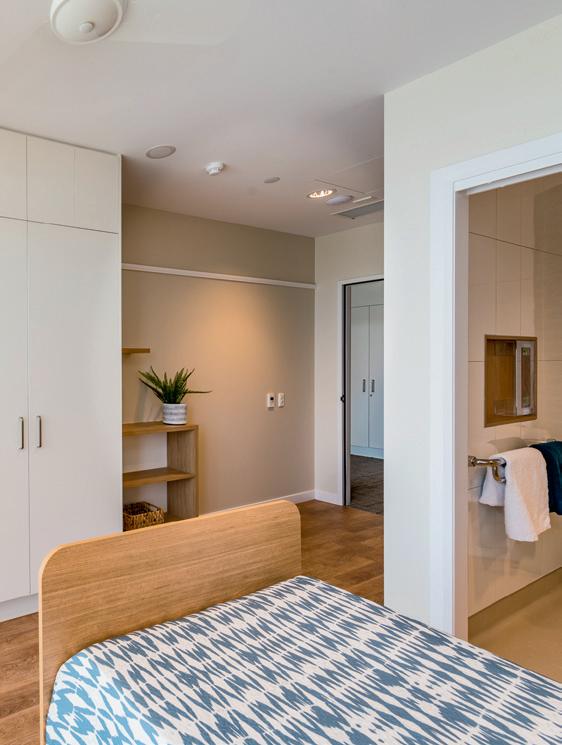

The service is broken into six distinct homes with domestic scaled kitchens, shared living spaces and common areas with beautiful vistas over the local area and landscapes gardens. Community facilities include a fully serviced cafe and hair salon, day respite, allied health and various multipurpose function spaces.
“Paynters provided an end-to-end solution for our clients at ECCQ, from initial master planning, in-house architectural design services and construction all the way through to the engagement of our interior design and operational specialists to procure, commission and install the residential and community furnishing as well as hotel services and clinical equipment,” said Rose Plater, Community Health and Ageing Manager, Paynters.
“In the case of Berlasco Inclusive Residential Care, our purpose is to honour the diverse cultural backgrounds of our residents and provide them with a home that embraces their unique identities. The use of floor-to-ceiling glass allows natural light to flood the space, symbolising the openness we strive for in our approach to care. The common areas, designed to be domestic and inclusive, create a sense of belonging and comfort, making every resident feel like they are part of a warm and welcoming home.”
Designing for Berlasco Inclusive Residential Care goes beyond creating a visually appealing space; it’s about fostering a connection with nature and promoting the wellbeing of residents, Plater said. “In addition to the light-filled interiors and inclusive common areas, we have incorporated access to green spaces and accessible gardens. These outdoor areas provide a sanctuary for residents to immerse themselves in nature, engage in therapeutic activities and enjoy the beauty of the surrounding environment. By integrating these elements, we aim to create a harmonious balance between the indoors and outdoors, enhancing the overall experience and quality of life for our culturally diverse aged community.
“At Paynters, through our design we prioritise the wellbeing and comfort of every resident. We have carefully considered the outlook of each resident’s room, ensuring that they have a view that brings joy and tranquillity. Whether it’s a view to the street front, where residents can feel connected to the vibrant energy of the surrounding neighbourhood, or a view of the beautiful gums that provide a sense of serenity and connection to nature, or even a view of the internal courtyard that offers glimpses of the water feature, edible garden and interactive community colonnade. We believe that a thoughtful and inspiring outlook can greatly enhance the living experience. We strive to design spaces that not only meet their physical needs but also nurture their emotional wellbeing.”
The project, completed in December 2022, recently bagged the Brisbane Master Builders Queensland Housing and Construction Award for Community Accommodation for Specialist Disability, Aged Care and Nursing Homes. n
AUGUST 2023 - AGED HEALTH 17 www.agedhealth.com.au
Image credit: Lucy RC Photography.
ORAL HEALTH CHALLENGES IN AGED CARE
Australians aged 65 and over had an average of 13.7 missing teeth in 2017–18, according to data from the Australian Institute of Health & Welfare. Around 59% suffered periodontitis and around 7% avoided eating some foods due to problems with their teeth, mouth or dentures.
With Dental Health Week in August (7–13), the Australian Dental Association’s (ADA) flagship oral health promotion event, it’s a great time to think about how we look after our mouths and those of older Aussies. The harsh reality is that urgent and long overdue changes are needed to improve oral health care for older Australians in aged care facilities.
With a new government in Canberra for over a year now, we at the ADA — the dental body which represents the nation’s 17,000 dentists — remain quietly optimistic that the shocking oral neglect of older Australians in aged care stands a chance of getting resolved.
We have seen some terrible oral neglect of our oldest citizens — so it came as no surprise that the Royal Commission into Aged Care Quality and Safety nominated “insufficient attention to oral health, leading to widespread malnutrition, excruciating dental and other pain” amongst the raft of concerning issues brought to its attention.
This problem is only going to get more pressing with people living longer. Between now and 2050
the number of Australians aged 65 to 84 years is expected to more than double, while the number of those aged 85 years and over is expected to more than quadruple to 1.8 million by 2050.
With it comes challenges for healthcare service delivery — as people age, they have poorer mobility and more complicated medical issues requiring more complex care.
It also means more people have their natural teeth for longer, many with complex and sophisticated restorations to keep those teeth, as well as a much higher risk of degenerative problems like decay and fracture.
Almost non-existent provision of oral care for those in aged care coupled with long waiting lists in the public dental system adds up a perfect storm for rotten dental health for this expanding age group.

The ADA made a number of recommendations to the aged care inquiry, and central to this is the need to tackle the oral healthcare of seniors not only within aged care, but in the years before they enter the system. Yet the health assessments done by GPs for the over 75s don’t currently include oral health.
Indeed, many older people enter aged care with poor oral health because they only go to the dentist when in pain, or they have reduced manual dexterity (ergo failure to brush twice a day or floss) due to arthritis, or perhaps dementia is a contributory factor.
So they come with cracked or fractured teeth, untreated gum disease, dentures that are overdue for a clean or replacement, or ulcerated tongues caused by broken teeth to name a few problems.
Coupled with this are the many complex health conditions older people suffer and associated medications which can result in reduced saliva flow, increasing the risk of dental caries and gum disease.
Addressing and preventing these problems requires careful daily attention to oral hygiene as well as regular reviews by a dentist. Under the current system none of this happens.
Studies have also shown that high levels of plaque accumulate on residents’ natural teeth and dentures, which places them at high risk for developing
18 AGED HEALTH - AUGUST 2023 www.agedhealth.com.au
DR STEPHEN LIEW*, AUSTRALIAN DENTAL ASSOCIATION PRESIDENT AND MELBOURNE DENTIST
iStock.com/Svitlana Hulko
aspiration pneumonia, a commonly occurring event which can be fatal and necessitates immediate transfer to an acute care facility.
Several reviews found that daily brushing of nursing home residents’ teeth and/or dentures could dramatically reduce that pneumonia risk — in one study by almost 40% for pneumonia and almost 60% for fatal pneumonia.
Knowing what a difference even basic oral hygiene steps can make is one of many incentives to resolve this issue of understaffed residential homes where carers have not received appropriate training.
In our Aged Care Commission submission, the ADA proposed a national funding model — the Seniors Dental Benefits Schedule (SDBS) — to make dentistry accessible to more older Australians.
The ADA estimates this would cost just $95m a year to administer based on a 100% uptake of the scheme, which is not likely.
The SDBS would use the existing Child Dental Benefits Schedule as the template for additional dental benefits assistance schemes for population groups with poor oral health and unmet dental treatment needs, including Commonwealth Seniors Card and Pensioner Concession Card holders. Thankfully, the Aged Care Commissioners agreed and included it in their set of recommendations.
Other urgent measures the ADA is advocating for to fix the broken system: the Certificate III Aged

Care qualification to include oral care as one of its core units of study and for GPs to include oral health in their health assessments for over 75s.
It remains to be seen if the recommendations, if adopted, will ensure enough nursing staff and personal care workers, not least when there is already a national shortage of nurses and while aged care workers are notoriously underpaid despite the recently promised pay rise.
Lack of an appropriate type of dental chair, X-ray facilities and other dental equipment at aged care facilities are undoubtedly also barriers to providing quality care.
But these issues could be addressed if such facilities were incorporated into the design of new aged care homes so dental professionals could treat more complex cases onsite rather than in an offsite dental clinic with all the logistics and transport complexities that brings.
This will not occur without direction from governments or support provided to existing facilities — but the development of a multipurpose room used by dentists and other visiting healthcare professionals would have significant cost benefits to the health system overall. n
*Dr Stephen Liew graduated from the Australian Institute of Company Directors with the Order of Merit and is a recipient of the Australian Outstanding Young Dentist Award. He has chaired or served on many committees at federal and state level for over a decade, including the Australian Digital Health Agency’s Secure Messaging Steering Group and the FDI World Dental Congress 2021-3 Committee. He worked rurally in public health, volunteered in Australia and overseas, and is a Fellow of the International College of Dentists, Academy of Dentistry International and Pierre Fauchard Academy. He is the Federal ADA President.
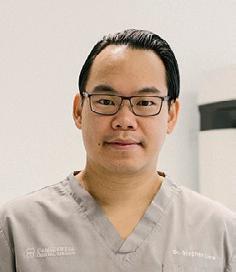
SIMPLER – ONE STEP CLEAN AND DISINFECT
A cleaner disinfectant reducing the need for multiple products.
SMARTER – SUPERIOR EFFICACY
Killing up to 99.9999% of pathogens including bacteria, viruses, mould, fungi, yeast, TB and Spores.
FAST KILL TIMES WITH NO WET CONTACT TIME REQUIRED
Begins to work from 30 seconds and keeps on working to achieve all kill times even when dry.
SAFER – MATERIAL COMPATIBILITY
Tested and proven compatible with a vast range of surfaces with no heavy detergent residues.

RESIDUAL AND BIOSTATIC CAPABILITIES
With 24-hour residual on touched surfaces for bacteria, COVID-19, and yeast and a further 72-hour biostatic effectiveness on bacteria and COVID-19.
S-7XTRA IS AVAILABLE IN UNSCENTED AND NEW S-7XTRA FRESH – GINGER & GREEN TEA
AUGUST 2023 - AGED HEALTH 19 www.agedhealth.com.au Pty Ltd MINIMISE RISK, REDUCE COSTS AND ENHANCE YOUR SURFACE PROTECTION. INSIST ON S-7XTRA FOR YOUR CLEANING AND DISINFECTION. We invite you to request more information and receive your FREE sample. PROUDLY MADE IN AUSTRALIA 1300 936 044 | info@anaeron.com.au | www.anaeron.com.au ARTG 232011 ARTG 232014
Personal alarms
MePACS personal alarms are designed to provide 24/7 care and safety for seniors, people with chronic conditions or people living with disability.
All MePACS personal alarms are monitored 24/7 by a team of trained emergency professionals, who promptly respond to every call with care and compassion. Once a user has pressed the help button on the alarm, the monitor will assess the situation and get the appropriate help quickly, while also providing reassurance and support until help arrives. The MePACS Emergency Response Centre is open around-the-clock, 365 days a year.
The MePACS personal alarm range includes home, mobile and watch alarms, as well as portable duress alarms for lone workers. Features include 4G technology, GPS, falls detection, water resistance, 2-way voice communication, and more.
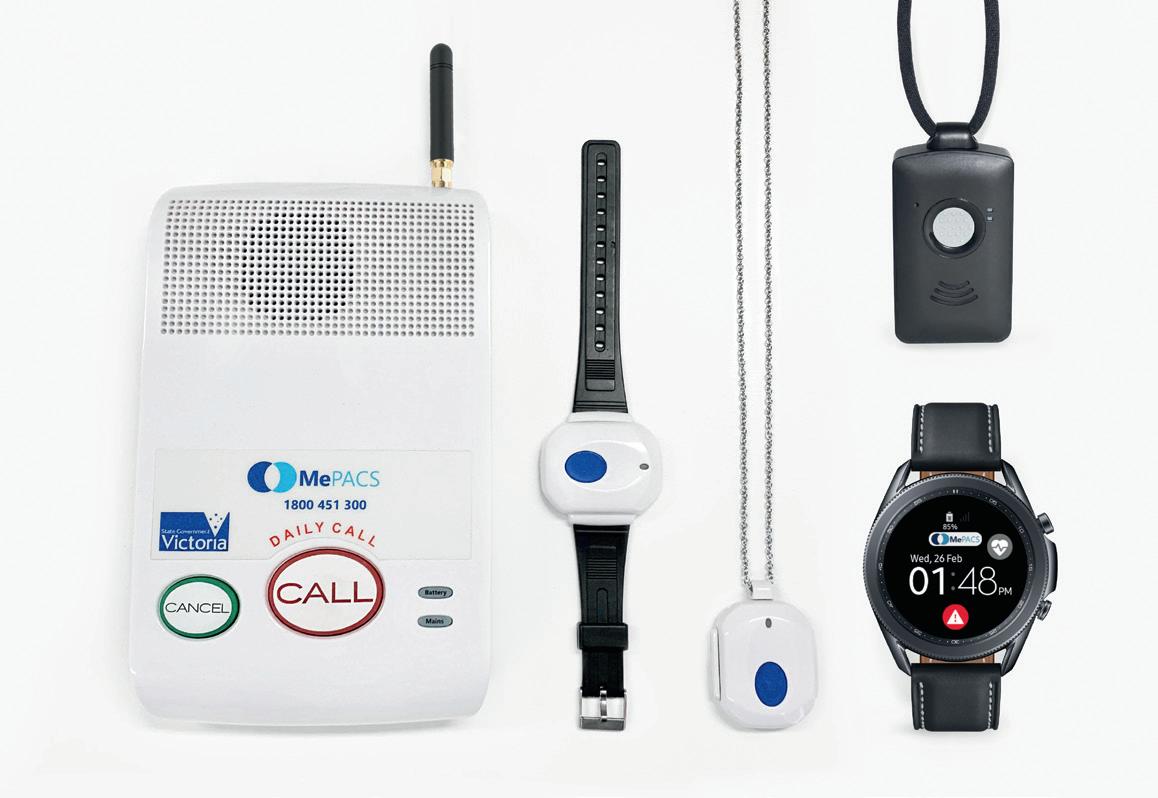
As a division of public health provider Peninsula Health, all of MePACS’ profits go back to the public health network.
MePacs
www.mepacs.com.au
Hand towels
Durelle Slimline and Durelle Ultraslim hand towels are strong and absorbent hand towels from Restock.
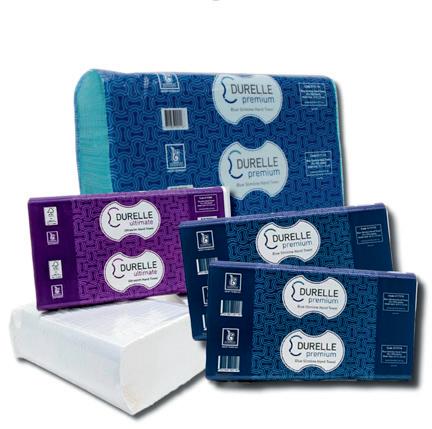
Created using TAD technology, these hand towels are made of special fibres that interlock to create a sturdy sponge-like structure, providing maximum absorption.
This advanced production process removes excess water using high-temperature air flow, leaving all absorbency opportunities for when needed most.
Made from a mix of recycled and virgin fibres, Restock’s high-quality Durelle line offers a combination of softness, wet strength and absorbency.
Bruise cream
Bruise-eze is a patented cream containing the protein lactoferrin embedded in a liposome.

Lactoferrin has a strong affinity for iron and thereby accelerates the natural healing process of bruises and haematomas.
Fresh bruises appear as blue to reddish purple in colour due to iron released from the breakdown of haemoglobin.
Lactoferrin binds to this iron, which is then broken down by our immune system.
Lactoferrin is a natural protein that can be found in our innate immune system and has many beneficial properties which can help to accelerate the healing process. Bruise-eze is iron-binding, anti-inflammatory, anti-biofilm, a re-healing bacteriostatic and an antioxidant.
Bruise-Eze
bruise-eze.com.au
Durelle’s FSC certified hand towel line enables users to make a responsible choice. The FSC certification meets the ‘gold standard’ of ethical production, meaning the supplies are sourced and harvested from responsibly managed and socially beneficial environments.
The sheets are individually dispensed to minimise excessive use and reduce purchasing costs.
Restock is offering a free dispenser program providing free dispensers, free installation and free maintenance.
Restock Pty Ltd
www.restock.com.au
20 AGED HEALTH - AUGUST 2023 www.agedhealth.com.au
Disinfecting wipes
Available from Anaeron, the Steri-7 wipes have been developed following decades of research and have been tested to achieve desired outcomes.
The S-7XTRA cleaner disinfectant kills 52+ pathogens including bacteria, viruses such as COVID-19, plus norovirus, mould, fungi, yeast, TB and spores such as C. difficile. The product begins to work from 30 s with no need for wet contact times.
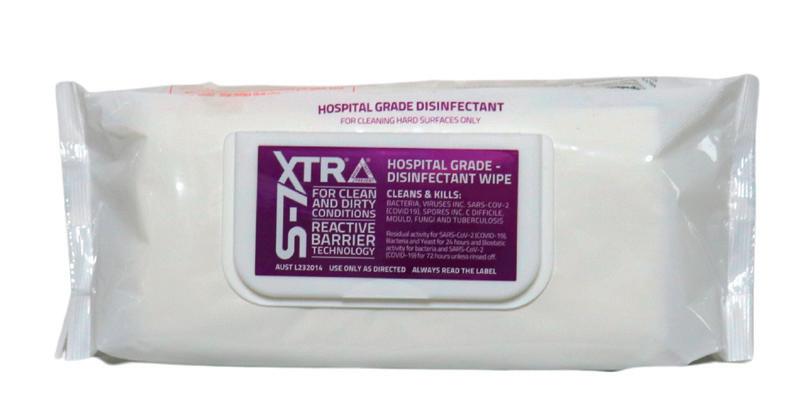
S-7XTRA has been proven to offer 24-hour residual on touched surfaces for pathogens such as bacteria, COVID-19 and yeast and a further 72-hour biostatic surface protection for bacteria and COVID-19.
Listed on the Australian Register of Therapeutic Goods (ARTG) 232014, S-7XTRA is compatible with an extensive range of materials leaving a streak-free finish. The wipes are also free from heavy detergent residues which can cause damage over time.
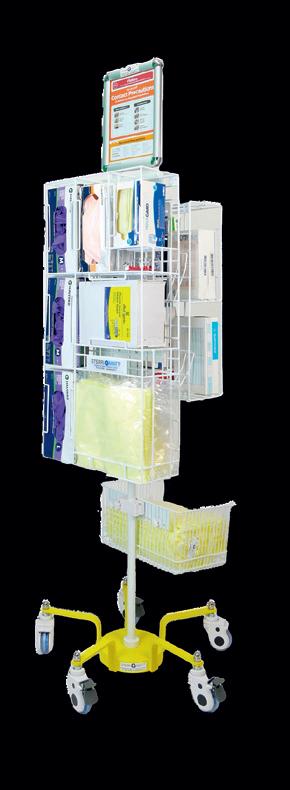

S-7XTRA wipes are currently available in a soft pack of 80 wipes and a canister of 200 wipes.


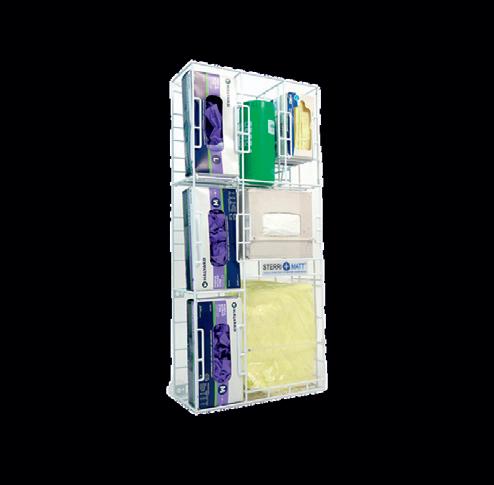

Anaeron Pty Ltd
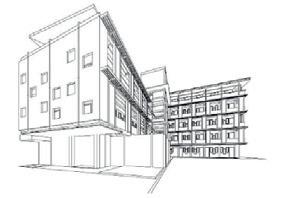



www.anaeron.com.au

Nurse call system
The SSG (Static Systems Group) Acelo ‘plug and play’ nurse call system is designed to connect people through versatile, scalable and interoperable communication technology to allow staff to be free from unnecessary distractions.


The system is unlocked to allow a vendor-agnostic end-to-end IP solution aimed at providing a proprietary layer of advanced analytics capabilities, enabling the monitoring of patient call patterns, staff response times and other key metrics to make informed decisions about staffing and resource allocation.

LAN connectivity allows peer-to-peer communications, so all nurse call devices are interconnected and can communicate together. It also allows patients to easily communicate with nursing staff, alerting them to their needs at the touch of a button.
The system is customisable, with a range of options for call buttons, bedside displays and alert notifications, ensuring that patients receive the right level of care at the right time. It complies with Australian Standard AS3811 –Hard Wired Patient Alarm Systems.
SSG
www.staticsystems.co.uk/int/homepage-int/
AUGUST 2023 - AGED HEALTH 21 www.agedhealth.com.au
HOW DO 'SUPERAGERS' DEFY BRAIN AGING?
Most people’s memory function gradually declines as they age; however, ‘superagers’ — people in their eighties who can recall everyday events and life experiences as well as someone 20 to 30 years younger — appear to be able to avoid this age-related deterioration.
These people are more likely to have greater movement speed than typical older adults and also have lower rates of anxiety and depression, according to a new study published in The Lancet Healthy Longevity journal.

“We are now closer to solving one of the biggest unanswered questions about superagers: whether they are truly resistant to age-related memory decline or they have coping mechanisms that help them overcome this decline better than their peers,” said first author Marta Garo-Pascual, of the Queen Sofia Foundation Alzheimer Centre, Madrid.
“Our findings suggest superagers are resistant to these processes, though the precise reasons for this are still unclear. By looking further into links between superaging and movement speed we may be able to gain important insights into the mechanisms behind the preservation of memory function deep into old age,” Garo-Pascual said.
IDENTIFYING EARLY INDICATORS OF ALZHEIMER’S
To help address these knowledge gaps, the authors conducted an analysis of superagers. Superagers and typical older adults were discovered within an ongoing project designed to help identify early indicators of Alzheimer’s disease.
The Vallecas Project cohort in Madrid consisted of people aged 69 to 86 years with no neurological or severe psychiatric disorders. Of the cohort’s 1213 participants, recruited between 2011 and 2014, 64 superagers and 55 typical older adults, performing well on several cognitive tasks but not displaying superager memory ability, were identified and included in the new study.
Superagers and typical older adults were identified based on their performance in the Free and Cued Selective Reminding Test (FCSRT), which is used to assess people’s memory function. Superagers did at least as well as the average person around 30 years younger with the same education level. Typical older adults performed within a normal range for their age and education. All typical superagers and normal older adults were 79.5 years or older. Most superagers were women (38/64, 59%), as were most typical older adults (35/55, 64%).
In line with previous studies, MRI scans showed superagers to have more grey matter — tissue vital for normal brain function — in key brain areas involved in memory, and also in a part of the brain involved in movement. Superagers’ overall level of grey matter in key areas also degenerated more slowly over five years than in typical older adults.
22 AGED HEALTH - AUGUST 2023 www.agedhealth.com.au
iStock.com/adamkaz
A new study suggests that 'superagers’ move more quickly and have better mental health than typical older adults, with MRI scans adding to evidence that they have more grey matter in key regions linked to memory function.
MACHINE LEARNING, MOVEMENT AND MENTAL HEALTH
Using the machine learning computer model, the authors found faster movement speed and better mental health were the factors most often associated with superagers.
Superagers performed better in the Timed Up and Go Test — which gauges people’s mobility — and a finger tapping test that measures fine motor function, indicating they have better mobility, agility and balance than do typical older adults. This observation was made despite no differences in self-reported exercise levels between superagers and typical older adults.
In clinical tests to measure levels of anxiety and depression, superagers scored lower than typical older adults. Previous research suggests depression and anxiety can impair performance on memory tests in people of all ages, and are risk factors for developing dementia.

PHYSICAL ACTIVITY
Senior author Dr Bryan Strange, of the Universidad Politécnica de Madrid said, “Though superagers report similar activity levels to typical older people, it’s possible they do more physically demanding activities like gardening or stair climbing. From lower blood pressure and obesity levels to increased blood flow to the brain, there are many direct and indirect benefits of being physically active that may contribute to improved cognitive abilities in old age.
“We have shown before that when young adults make movements at the same time as seeing pictures, they are more likely to later remember the picture than if they don’t move. It’s also possible that having better brain health in the first place may be what’s responsible for superagers having faster movement speed.
“Further research in these areas may ultimately reveal ways to help preserve memory function in more older people. What we have, however, discovered is that there is an overlap between risk or protective factors for dementia and those associated with superaging (such as blood pressure, glucose control and mental health). This raises a possibility that some putative risk factors for dementia are, in fact, contributing to age-related decline in memory-related brain activity that may act in parallel or additively with dementia pathophysiology to amplify memory impairment.”
OTHER SELF-REPORTED DIFFERENCES
Other self-reported differences were also observed, including that superagers’ lifestyles in midlife were generally more active, they were satisfied with their sleep duration, and were more likely to have a musical background — either taught or amateur — than did typical older adults. Superagers also demonstrated greater independence in their day-to-day living and scored higher in intelligence tests.
Blood sample analysis indicated that superagers have lower levels of biomarkers for neurodegeneration than do typical older adults. There were no differences found between them based on the presence of a major genetic risk factor for Alzheimer’s disease, called APOE e4.
The authors acknowledge some limitations to their study. As with any observational study, it is not possible to say whether the factors reported have any direct effect on superaging. Despite using 89 variables, the machine learning model was only able to distinguish superagers from typical older adults around 66% of the time, indicating that additional factors — possibly genetic — are linked with superaging. Further research into overlap between genetic links with superaging and genes associated with fast muscle movements among the elderly could help to narrow the search.
This study was funded by the Queen Sofia Foundation, Spanish Ministry of Science and Innovation, Alzheimer’s Association, European Research Council and MAPFRE foundation. n
AUGUST 2023 - AGED HEALTH 23 www.agedhealth.com.au
REDUCE ADMIN AND FOCUS ON PATIENT CARE WITH EFFICIENT ASSET MANAGEMENT
Aged care facilities house some of our community’s most vulnerable people which is why it is critical that they are always kept in peak condition.
Aged care providers must be able to give all the care and services required to meet the needs of patients and residents, supporting their health, wellbeing and safety.
But that’s not an easy task.
Dealing with breakages and maintenance can be stressful and time consuming, taking carers away from their core roles of looking after patients and residents. The good news is there are simple and efficient ways to ensure that all assets and facilities are maintained and kept in tip top shape to ensure the safety, comfort and well-being of those being cared for.
Help reduce admin with scheduling and automation
Managing assets doesn’t have to be tedious or time consuming with asset management software which can help to boost staff efficiency by simplifying scheduling of projects, work orders and tasks. The software enables aged care staff to simply view and schedule work orders, dispatch work to contractors for repair and maintenance, and track work progress from order to completion to make sure work is performed on time and to a high standard.
Asset management software creates a single source of truth for all asset information
and can reduce admin load with automated processes. Automated maintenance scheduling means less time-consuming paperwork and scheduling for aged care staff while still being able to increase the reliability and service life of essential equipment and upkeep of residential buildings. Regular maintenance not only ensures that these assets are functioning correctly and in peak condition in order to be able to provide best care outcomes, but also helps to prevent costly and disruptive breakdowns.
Maximise staff efficiency with project lifecycle management
Using software like TechnologyOne’s Project Lifecycle Management, embedded and integrated with other business processes such as Financials, Contracts, Human Resources & Payroll, makes managing assets simple with the ability to operate more effi ciently through end-to-end management of aged care operations.
Portfolio, program and project management software can help identify capital initiatives, and prioritise their delivery aligned with organisational objectives and strategies optimised against available funding. Project costs, risks and timelines are also able to be managed and controlled thanks to a unified view of all portfolio, program and project information.
Global ERP software company TechnologyOne empowers over 150 health and community services organisations with their software and understand the need for better asset management in the aged care sector.

“For aged care providers, their residents are their number one priority. They need to be focused on their safety, comfort and well-being,” said Vanessa Devine, Sales Director for Health & Community Services at TechnologyOne.
“With our asset management software, our customers in the aged care sector can now manage their assets and operations more effectively, including maximising staff efficiency and freeing up much-needed funds which allows them to provide the best level of care to their patients,” says Devine.
TechnologyOne’s Enterprise Asset Management enables aged care providers to focus on better health outcomes for residents, reduce operating costs and wastage, and manage compliance through improved visibility, accuracy, and efficiency. Discover a system that offers one single source of truth here: technologyonecorp.com/eam
24 AGED HEALTH - AUGUST 2023 www.agedhealth.com.au SPONSORED CONTENT TechnologyOne www.technologyonecorp.com/eam
iStockphoto.com/Cecilie_Arcurs
MORE
THAN AN ACT
THE PROPOSAL FOR A NEW AGED CARE REGULATORY REGIME
ANGELA WOOD* AND LUCILLE SCOMAZZON**, MADDOCKS
Anew regulatory model for Commonwealth-funded aged care services is expected to commence on 1 July 2024, together with the new Aged Care Act — with an exposure draft of the new rightsbased Aged Care Act due to be available in December 2023.1

The Department of Health and Aged Care (Department) recently published a comprehensive paper outlining its proposed new regulatory model.
The Consultation Paper, entitled “A new model for regulating aged care; Consultation Paper No 2: Details of the proposed new model”, sets out a detailed proposal for the way in which aged care services that receive Commonwealth funding will be regulated into the future. A summary paper has also been published on the Department’s website.
The regulatory model builds on the findings of the Royal Commission into Aged Care Quality and Safety (Royal Commission) that the “current regulatory system is no longer fit for purpose”.1
The Department has also published a document entitled “Aged Care Reforms — a providers guide”2, which sets out how providers can provide feedback to the Department on the proposed reforms.
Providers are uniquely placed to respond to the proposed model having lived experience of the current system, understanding where it works well and where improvements could be made to ensure a fit-for-purpose regime. In particular, to consider whether the regime is likely to achieve the outcomes of ensuring the provision of high quality and safe care to consumers, rewarding those providers who do and identifying where there are risks to consumers.
In an overview of the proposed new model the following key issues are noted, being, changes to:
• provider eligibility and entry
• provider obligations
• regulatory oversight
• complaints and feedback mechanisms
• information sharing. >>
AUGUST 2023 - AGED HEALTH 25 www.agedhealth.com.au
iStock.com/KatarzynaBialasiewicz
1. THE END OF THE APPROVED PROVIDER — PROVIDER REGISTRATION AND RE-REGISTRATION

• Under the proposed framework, all providers of Commonwealth-subsidised aged care services, including providers receiving Commonwealth Home Support Program funding, will be required to be registered. This will replace the current approved provider and accreditation arrangements, replacing them with requirements for registration and, at defined intervals, re-registration.
• This change will be in addition to impending requirements for the registration of workers in aged care services.
• To be registered, providers will be required to: - meet yet-to-be-specified prudential and financial standards; and
- if required, meet the requirements of any audit against the revised Aged Care Quality Standards (Quality Standards).
• Providers will be required to register in respect of each site or service where aged care services are delivered. Each site is included in the provider’s registration and removal of a site is a variation to the same.
• Sole traders and other non-corporate entities will be able to become registered providers to deliver home care and community care services. This change to the current position will not apply for residential aged care providers who will continue to be required to be constitutional corporations.
• In a further change, registration will not be a ‘set and forget’ process. Rather, registered providers will be required to re-register at the end of each registration period. The standard registration period is expected to be three years. However, registration periods may be able to be varied by the Regulator (currently the ACQSC) to respond to particular risks, whether based on the kinds of aged care services delivered or on a per provider basis in response to identified concerns.
• Provider obligations will differ depending on which category they are registered in.
• Certain providers will be audited against the Quality Standards and compliance will be graded (rather than merely being met or not met) against those standards.
• As noted, it is intended that the new Aged Care Act will commence on a specified, single ‘go-live’ date. The new regulatory scheme is intended to commence on the same date.
In order to avoid all existing providers being required to register before the expected commencement date, the Department is proposing a deeming process so that approved providers (and CHSP providers)
will be deemed to be registered in certain categories of providers (subject to providers being required to give certain information to the Department).
• It is also expected that re-registration periods (and the payment of registration fees to be implemented by the Department to enable cost recovery) will be staggered, to avoid all providers being required to be re-registered at the same time. The period of initial registration will depend upon certain (yet-to-be-specified) risk considerations, past performance and the time of the provider’s last accreditation.2
2. A NEW LEGISLATIVE DEFINITION OF “HIGH QUALITY CARE”
The report of the Royal Commission discussed at length the importance of aged care services providing safe and high quality care to older Australians. It is proposed that the new rights-based Aged Care Act will include both a Statement of Rights of consumers (rather than this being found in regulations or principles) and also a definition of “high quality care”. It is suggested that high quality care will be taken to mean care and services provided to individuals that prioritise:
• delivery of services with compassion and respect for the individuality, life experiences, self-determination and dignity of a person accessing care, and their quality of life;
• providing services that are trauma-aware and healing-informed and responsive to the person’s expressed personal needs, aspirations and their preferences regarding how services are delivered to them;
• facilitating regular clinical and non-clinical reviews to ensure that the services delivered continue to reflect their individual needs;
• supporting the person to enhance their physical and cognitive capacities and mental health where possible; and
• supporting the person to participate in cultural, recreational and social activities and remain connected and able to contribute to their community.3
In considering the regulatory framework that is needed to ensure the delivery of high quality care, the Department proposes that its new model will focus on building and strengthening relationships between the providers and older people, the Regulator and providers, and older people and the Regulator.
26 AGED HEALTH - AUGUST 2023 www.agedhealth.com.au
>>
Category Description Service type
Category 1 Home and community services
• domestic assistance
• home maintenance and repairs
• meals
• transport
No clinical skills are required to provide these services
Category 2 Assistance technology and home modifications
• digital technologies
• digital monitoring, education and support
• goods, equipment and assistive technologies (non digital)
• home modifications
Category 3 Social support
Category 4 Clinical and specialised support
Social support services — usually relationally based and higher frequency of services
• personal care
• care management
• transition care (in the home)
• specialised supports
• assistance with care and housing (housing and squalor support)
• nursing
• allied health
It usually involves consumers who are frail and may have cognitive impairments, and may require coordination of services.
Clinical skills and a system of clinical governance required

Category 5 Home or community-based respite services
Category 6 Residential care
Respite care — usually centre based and requiring more than one care worker due to the length of continuous care required
• accommodation services
• residential respite
• care and services
• transition care (residential)
• transition care support services (residential)
24/7 ongoing care of the older person required
Services are higher risk due to the frailty of older persons and associated risks (eg, restraint use)
AUGUST 2023 - AGED HEALTH 27 www.agedhealth.com.au
iStock.com/francescoch
3. NOT A ONE-SIZE-FITS-ALL MODEL: PROVIDER CATEGORIES FOR REGISTRATION AND COMPLIANCE
Under the new model, providers will be required to register in one or more categories based upon the kinds of aged care services they offer or intend to offer.

At present, six categories of registration are proposed in the Consultation Paper, with provider obligations increasing for each category from category one to six as follows:4
The new categories will allow for a more flexible approach to monitoring risks, with lower categories having a ‘light touch’ regulatory regime comprising monitoring and intelligence gathering only (noting that many of the services in categories 1 to 3 may be subject to other regulatory regimes).
The Department has noted that, where possible, obligations will be aligned with service offerings under the NDIS.
For all categories, the Regulator will undertake monitoring and receive intelligence in order to be able to proactively respond to risks in the sector. That monitoring and intelligence gathering is intended to be a more continuous process and broader than the current periodic audits and complaints management functions of the ACQSC.
The Department is seeking feedback on the categories and the high level descriptions (noting that these will need to be built into the new Aged Care Act which is being developed concurrently). In particular, fine-tuning of the risk-based approach to regulation in each category will be important to guard against two possibilities: • under regulation, resulting in increased risks to older persons; and
• over regulation, which places an excessive burden on providers and acts as a disincentive to remaining a registered provider.
The classification system will also mean that the obligations which apply to providers may not be the same across all categories. While there are likely to be some common obligations (noted as conditions of registration), certain other obligations will be category specific.
Compliance with the Quality Standards will only be required for registered providers in categories 4 to 6. Moreover, it is not expected that each category of provider will be required to comply with all of the Quality Standards. Conformance with Standards 6 (Food and Nutrition) and 7 (The Residential Community) would apply only to providers in category 6. The systems, policies and procedures of potential new providers in categories 4 to 6 will be audited against the Quality Standards as a condition of registration. Re-registration will require providers to demonstrate that their services conform to the relevant Quality Standards.
It is intended that providers will receive a graded outcome to any audit against the Quality Standards, with the intention of recognising and rewarding providers who are able to demonstrate that they exceed expectations and show elements of best practice, noting those who largely conform, those who show minor non-conformance and providers with major non-conformance to the expected standards. It is expected that the outcomes of the audits will be published along with the star ratings of providers.
4. REGULATORY ACTION AND ENFORCEMENT POWERS
Of particular importance to providers will be the proposed enforcement powers of the Regulator and the Department under the new Act. There are two themes evident in a review of the proposed new regulatory model:
• Firstly, a proposal for a compliance and enforcement policy or regime that is more consistent with other Australian Government agencies, starting with guidance, support and education for providers and progressing to the exercise of enforcement powers where deemed necessary to respond to identified risks.
• Secondly, an intention for the regulator to undertake continuous monitoring of all providers using intelligence and data gathering (rather than relying on periodic audits or checks).
28 AGED HEALTH - AUGUST 2023 www.agedhealth.com.au
iStock.com/SeventyFour
The Consultation Paper notes the intention that all stakeholders including consumers and their families, providers and the Regulator develop collaborative relationships that will enable the sharing of ideas, support and education.
This is a worthy aim but achieving it will require a significant cultural shift to develop the trusted relationships that are required. It is not easy to achieve when the Regulator is also the party with significant enforcement powers. There is also still work to be done to rebuild the trust of consumers and their families following the Royal Commission.
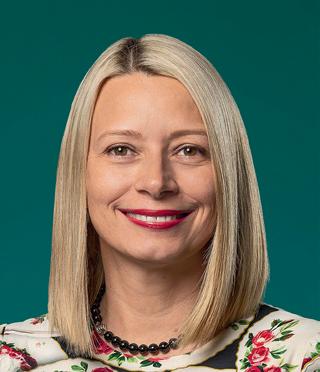
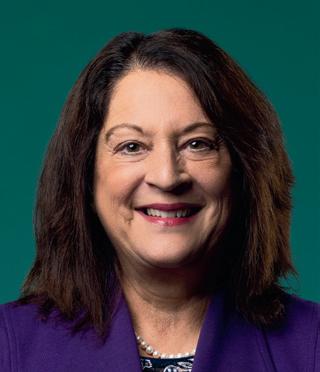
It is worth considering this aim against the proposed framework for monitoring compliance and enforcement actions under the new regime.
The new model proposes that all providers will be monitored on an ongoing basis, drawing on data and intelligence from a number of sources including provider registration, complaints, reportable incidents, provider notifications and reporting, audit outcomes, worker screening and the Department and other regulators such as the NDIS Quality and Safeguards Commission.5
Where a provider or service is considered to be high risk, they will be prioritised for further risk-based monitoring which could be site based, desk based, unannounced or announced. Intelligence and data will also be used to inform an understanding of system-wide risks that may need to be addressed.
When risks eventuate, it is intended to streamline the current system of notices into two forms only:
• Requirement for Action Notice (which will require a provider to do something or to stop doing something).
• A Compliance Notice for a failure to respond adequately or at all to a Requirement for Action Notice.6
The powers of enforcement available to the Regulator (and, where needed, the Department) are proposed to be broader than those currently available, drawing upon the Regulatory Powers (Standard Provisions) Act 2014, which is already in place and informs the compliance and enforcement policies of a number of Australian Government agencies.
Enforcement powers for the Regulator (where needed, the Department) are proposed to include:
• the power to suspend, vary or revoke a provider’s registration or change the conditions of their registration
• powers to issue banning orders for providers and workers
• powers to issue infringement notices, to require providers to enter into enforceable undertakings or powers to apply for civil penalties
• offence provisions, which are likely to apply in circumstances where death or serious injury has resulted from gross negligence or recklessness in the delivery of aged care services.
The Department notes that following on from the Royal Commission, compensation pathways are also being explored which could apply in circumstances when a person suffers harm arising from a serious breach of the provider’s obligations or from their failure to ensure that the health and safety of care recipients is not put at risk.
5. NEXT STEPS
There is a significant level of detail about the proposed regulatory framework in the Consultation Paper. It is clear that the Department is well advanced in its thinking around a new system of regulation that reflects a modern risk-based approach to regulating aged care services.
Providers would be well advised to take the time to consider what is proposed in the Consultation Paper and to take advantage of any opportunities to provide feedback to the Australian Government about the new model, based on their experiences of service provision to aged care consumers and their families. n
1. Aged Care Reform Activity - Roadmap published by the Australian Government Department of Health and Aged Care
2. Consultation Paper, page 5
3. Australian Government Department of Health and Aged Care A new model for regulating Aged Care Consultation Paper No
2: Details of the proposed new model at page 66
4. Consultation Paper, page 52
5. Consultation Paper, page 56
6. Consultation Paper, page 60
*Angela Wood, a partner at Maddocks, specialises in commercial and regulatory matters in the healthcare, medical device, aged care and community services sectors. She has over 20 years of experience advising health, aged care, medical device and not-for-profit providers throughout Australia. Angela has advised on high-profile matters including assisting clients to respond to the Royal Commission into Aged Care; advising on registration of goods under Australia’s Therapeutic Goods Register; acquisitions in the residential aged care industry; corporate governance issues, regulatory matters, investigations, privacy and risk management.
**Lucille Scomazzon is Maddocks' Healthcare sector team leader and advises clients across the healthcare spectrum with a focus on hospitals and health services, residential aged care, retirement living, disability and homebased care services. Having advised on a number of sector-transforming matters involving the acquisition, divestment and development of healthcare assets, Lucille acts for a range of organisations which own, operate, develop and invest in healthcare assets. Lucille’s transactional and project experience is underpinned by leading expertise advising on healthcare regulatory and funding frameworks and assisting clients to manage risks inherent in a highly regulated sector.
AUGUST 2023 - AGED HEALTH 29 www.agedhealth.com.au
The design of some aged care facilities may be worsening the health and quality of life of residents, according to a new study.
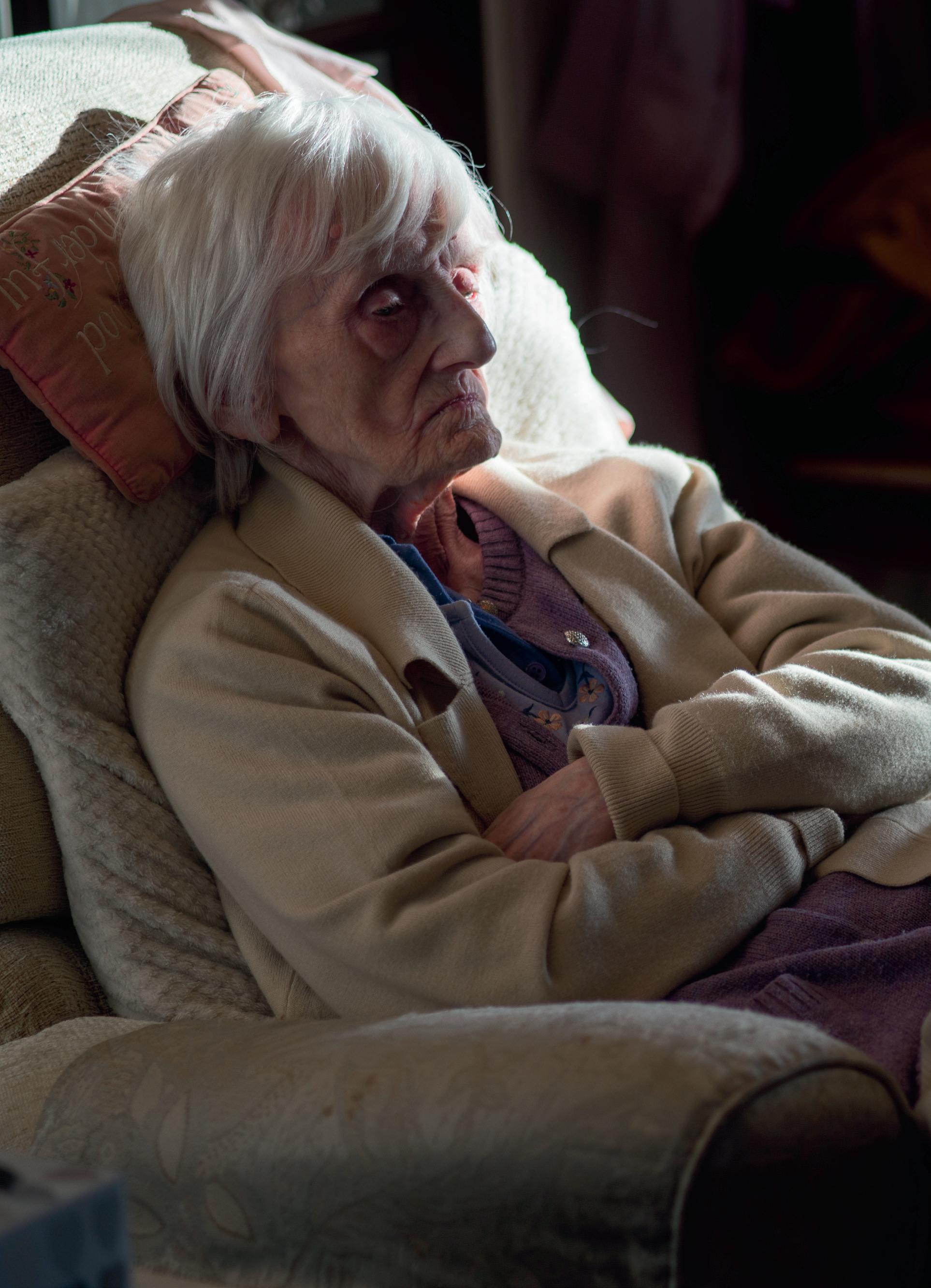
FACILITY DESIGN AND THE LONELINESS PROBLEM
30 AGED HEALTH - AUGUST 2023 www.agedhealth.com.au
iStock.com/Neil Bussey
Astudy involving residents and staff in aged care environments in Australia and the United Kingdom has found many residents prefer spending hours in their room to socialising or participating in activities in communal areas.
QUT industrial design researchers from QUT School of Design and Dr Claire Craig from Sheffield Hallam University, UK, interviewed participants on their experience of living and working in nursing homes.
The team worked with Brisbane-based industry partner LifeCare Furniture, who funded the study published in the Journal of Aging Studies, to use design to improve the environments of residents in aged care facilities and enhance their quality of life.
QUT Professor Thea Blackler said both studies explored the role of personal possessions and environmental design in relation to residents trying to feel ‘at home’ in aged care and how it affected their quality of life.
“Residents’ identities are influenced by their ability to keep treasured objects and personalise their rooms, and the design and accessibility of communal areas influences residents’ willingness to spend time in them,” Blackler said.
In the first study, the researchers focused on attachment to chairs and other possessions and the process of what to keep when transitioning into a nursing home, said Blackler. Staff recognised the role of personal possessions in the transition into care and encouraged residents to bring their own furniture where possible, especially chairs and bedding to help create a homelike atmosphere.
“Residents rated ‘my chair’ highly, whether they were appropriately designed or not. However, physiotherapists and other staff assess personal chairs to ensure resident and staff safety before they can be kept. While deep vein thrombosis (DVT) risks associated with sedentary behaviour can be alleviated with footrests and recliner chairs, in aged care homes footrests are deemed a falls risk, especially in common areas.
“Many residents had brought their recliner chair; however, we observed these chairs were often too close to the wall to allow reclining in the small space. We saw many rooms had a personal chair stacked full of books, activities and laundry, leaving the resident with only their bed to rest on.”
Blackler said residents often revealed they went to communal areas only for scheduled activities or events such as weekly concerts.
“When they wanted to relax, residents returned to their rooms where they might spend several hours a day sitting in their chair or lying on their bed. Residents had their own reasons for not using communal areas, and often preferred the isolation of their own room. For some residents cleanliness was a major deterrent to spending time in communal areas because they didn’t want to sit in seats they perceived as dirty and smelly due to the incontinence of other residents.”
Blackler said the industry partner had translated this finding into a new furniture system to address the issue of easily changeable, hygienic chair coverings.
“Another factor in reluctance to spend time with others is the layout of shared spaces which, in Australia, tend to resemble hotel lobbies or clubs with chairs in rows, to allow room for wheelie walkers. This type of layout makes it difficult to hold a conversation with someone across the room, particularly for those hard of hearing, as well as providing an ‘unhomely’ setting.
“These findings suggest that design issues in common areas resulted in relatively well residents preferring the isolation of sitting or lying in their rooms far more than necessary, which does not support their mobility nor cognitive or emotional health.”
Blackler said the studies found that creating a home within a ‘home’ with personal and treasured possessions was enabled only in the “small and cluttered space of residents’ private rooms”.
“Better consideration of residents’ needs can be built into the design and enable more personalisation in common spaces. Aged care homes could do this by encouraging placement and use of residents’ personal possessions in common areas, whether pictures or photos, craft supplies, finished craftwork or chairs and other furniture.
“Currently, many schools do a far better job of this than most so-called ‘homes’. Work must be done to allow residents to personalise both private and communal spaces so that they can retain their sense of identity and feel ‘at home’ in the home.”
LifeCare Furniture CEO Ian Reinhardt said the company designed and manufactured a chair in its Systm range based on the findings made during the collaboration with QUT for the study on aged care seating.
“Because cleanliness featured strongly in residents’ reports in our study, we have designed a chair that allows its covers to be easily removed for cleaning and reassembled with a new cover in less than 20 minutes. This is just one of the projects we are working on with QUT School of Design to make comfortable, safe and homelike furniture for people in aged care homes,” Reinhardt said.
The QUT research team comprised Professor Blackler and Dr Claire Brophy from the School of Design and Dr Fatima Kamali from the QUT School of Information Systems. n
AUGUST 2023 - AGED HEALTH 31 www.agedhealth.com.au
A DAY IN THE LIFE

32 AGED HEALTH - AUGUST 2023 www.agedhealth.com.au
LINDA VAN ZYL R
egistered nurse (RN) Linda Van Zyl’s interest in caring for others started at a young age and has continued well into adulthood.
“In primary school my favourite game was making ’medicines’ and ‘creams’ and I always loved making sure that any sick family member had the best care possible,” said Linda, who has always strived to give the best care and be the best advocate.
A registered nurse at Brightwater’s residential aged care home in Mandurah, Linda recently bagged the coveted Excellence in Residential Care Award for 2022 at the WA Nursing and Midwifery Excellence Awards.
With over 30 years of nursing experience, she has taken on the role of acting Clinical Nurse Manager when required and carried out the role with a level head and patience. In an official statement following the awards ceremony, Chief Executive Officer Catherine Stoddart said the award was a tremendous achievement and a testament to Linda’s dedication and commitment to providing outstanding care to residents.
“Linda’s passion for her work is inspiring, and we are grateful to have her as an integral member of our team,” Catherine said.
Linda said her day starts as soon as she is in her work attire. “I carefully pick what colourful scrub top I will wear as this can often be a conversation starter for many residents. I like to present myself neat and tidy, showing respect and consideration to our residents, while still having fun. You will occasionally find me wearing sneakers with bright pink laces and other fun attire. On special celebrations I try to wear something resembling the day, such as green on Saint Patrick’s Day.”
“At the commencement of my shift, I receive handover from the previous shift. As a registered nurse I check and manage the staff allocations for the day. I check the communication book, diary, bowel charts and address any immediate concerns. I meet and greet with all the multiskilled care workers on my shift, and we formulate a plan of action together.
“I typically do the 08:00 medication round and that gives me a golden opportunity to visualise all the residents in my care. During this time the clients can raise any concerns or needs that they would like me to follow up.
“Mealtime management is a big priority as many of our residents need physical assistance. I ensure they receive the correct meal and are assisted to the level of their assessed needs. After breakfast I focus on clinical care by prioritising residents that are unwell or need palliative care. I clinically assess residents for pain and wound management and tend to them. Nursing monitoring is done as required; this includes residents of the day assessments, annual assessments and other ad hoc assessments.
“By 10:00 all the clinical staff get together with the clinical nurse managers, and we have a quick meeting discussing any resident concerns and any changes or new expectations. We usually have a short tea break after our meeting before returning to the allocated work area.
“During my shift I also do a fair amount of documentation, assessments, admissions and referrals. I support the staff, the resident and their families as required. The responding and reporting of incidents as they happen is also an important part of my role. Communication with families is imperative for an authentic care model. Being busy the whole shift is not unusual and before you know it, it is time to finish off your tasks and hand over to the next shift.”
In her nominee application for the WA Nursing and Midwifery Excellence Awards, Linda noted a pivotal moment in her career. “The moment my mind shifted from a fixed mindset to a growing mindset is when I started achieving great things,” she said.
“Suddenly I had the desire to learn more, to teach more to help make others successful. I became stronger and learned how to persist in the face of setbacks.”
Linda has seen the aged care industry evolve over three decades. “Not only do we have so much more resources available, but people also live longer. The way we care for the elderly has changed for the better, with residents more involved in their own care goals and choices. Years ago, it was a much uniformed approach rather than individualised,” she said. Linda likes to learn from her mistakes and finds it motivating to be a role model to others.
Besides work, Linda enjoys reading, gardening, cooking and family time — while she loves being a registered nurse, she also likes to maintain a good work-life balance. n
AUGUST 2023 - AGED HEALTH 33 www.agedhealth.com.au
LAUGHTER THERAPY TO BOOST MOOD, MORALE
CONNECT. SEARCH AGEDHEALTH
Editor: Mansi Gandhi ah@wfmedia.com.au
Acting Publishing Director/MD: Janice Williams
Art Director/Production Manager: Julie Wright
Art/Production: Linda Klobusiak, Marija Tutkovska
Circulation: Dianna Alberry, circulation@wfmedia.com.au
Aged care provider Cranbrook Care is rolling out the Laughter Care program, delivered by Australian charity The Humour Foundation, at five care facilities. Cranbook Care's new program involves weekly visits from professionally trained Laughter Care performers, who engage with residents using stories, music, props, improvisation and reminiscence, with costumes often designed to connect with relevant eras in aged care residents’ lives, such as the 1940s, 1950s and 1960s.
“We’re constantly reviewing our lifestyle offering to identify opportunities to enhance the emotional, social and physical wellbeing of our residents, and with research underlining the many benefits of humour and meaningful connection for the elderly, we decided this would be a fantastic opportunity for both our residents and staff,” said Cranbrook Care CEO Lee Carissa.
The Laughter Care program is delivered in conjunction with The Humour Foundation, best known for its Clown Doctors program which improves the hospital experience for children and their families in more than 20 hospitals across Australia.
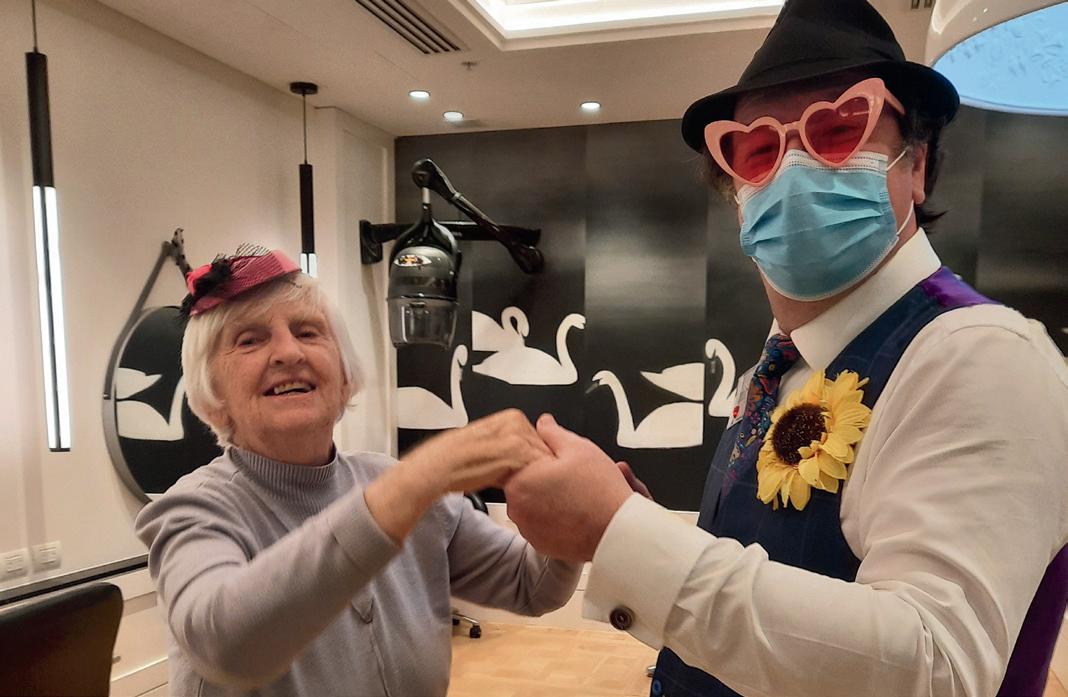
Findings from The Humour Foundation’s SMILE Study, measuring the impact of laughter and joy on residents living with dementia, showed a decrease in agitation levels to the same extent as anti-psychotic drugs, but without side effects.
“Our research has shown that the Laughter Care program can help decrease resident depression and behavioural disturbances while increasing positive behaviour, boosting staff morale and uplifting the atmosphere of aged care facilities,” said Karey Payne, National Programs Manager of The Humour Foundation.
Cranbrook Care chose to introduce laughter therapy not just to bring a touch of joy to their valued residents and staff, but also to help improve the quality of life for residents who may be having a ‘blue’ day, who are struggling with physical and/or mental health deterioration, who may be isolated from family and friends, who have suffered the recent passing of a spouse, or who have conditions which may make it difficult to communicate or be understood.
“Since rolling out the Laughter Care program, we’ve received some fantastic positive feedback from both participating residents and staff, who have said it’s an ‘absolute joy’ to watch Laughter Care performers interact with residents, who have been ‘entranced’ by the new activity,” Carissa said.
“Our Laughter Care performers are not ‘slapstick’ clowns, they’re empathetic souls with a talent for breaking down barriers and bringing smiles and joy to those who need it most. In addition to clearly boosting the morale of residents, the program is also having a significant impact on staff who derive real pleasure from seeing the impact of laughter therapy on the residents in their care. Our staff are already employing some of the tactics they’ve observed these specifically trained performers use to develop fun and practical humour therapy tactics that break down barriers and elicit physical and verbal reactions, especially from some of our less outgoing residents,” Carissa said. n
Copy Control: Mitchie Mullins copy@wfmedia.com.au
Advertising Manager: Kerrie Robinson +61 400 886 311 krobinson@wfmedia.com.au
PUBLISHED BY Westwick-Farrow Media A.B.N. 22 152 305 336 www.wfmedia.com.au
Head Office Unit 7, 6-8 Byfield Street, North Ryde Locked Bag 2226 North Ryde BC NSW 1670 AUSTRALIA ph: +61 2 9168 2500
If you have any queries regarding our privacy policy please email privacy@wfmedia.com.au
Subscriptions for unregistered readersprice on application
Printed and bound by Dynamite Printing Print Post Approved PP100029283 ISSN 2653-4770
NOTICE: All material published in this magazine is published in good faith and every care is taken to accurately relay information provided to us. Readers are advised by the publishers to ensure that all necessary safety devices and precautions are installed and safe working procedures adopted before the use of any equipment found or purchased through the information we provide. Further, all performance criteria was provided by the representative company concerned and any dispute should be referred to them. Information indicating that products are made in Australia or New Zealand is supplied by the source company. Westwick-Farrow Pty Ltd does not quantify the amount of local content or the accuracy of the statement made by the source.
34 AGED HEALTH - AUGUST 2023 www.agedhealth.com.au
PRINT / DIGITAL / MOBILE VISIT WWW.AGEDHEALTH.COM.AU
YEARS CELEBRATING
Judith and Monty dancing. Image courtesy of Cranbrook Care.

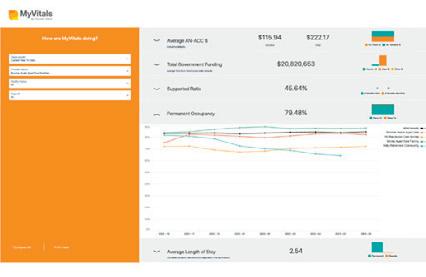


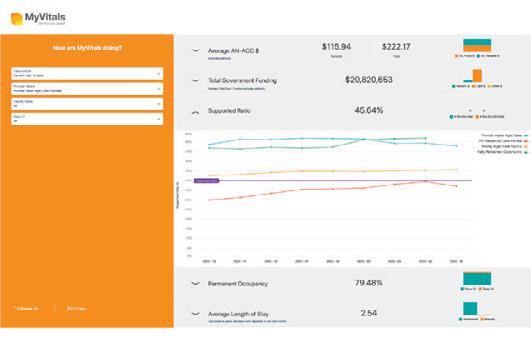
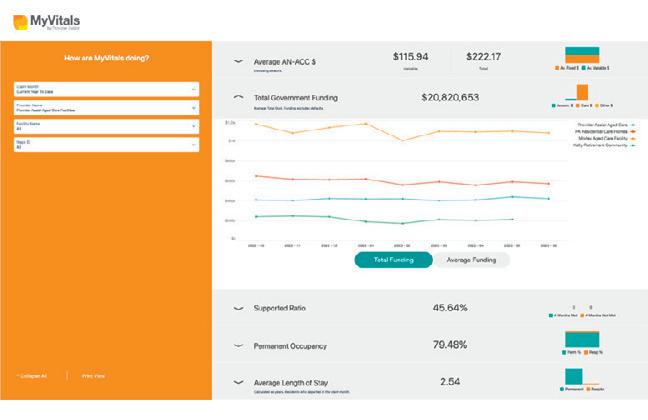





 Simplot code: 12926
Simplot code: 12926










